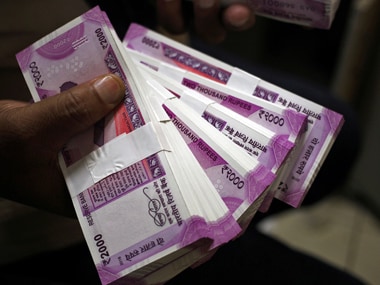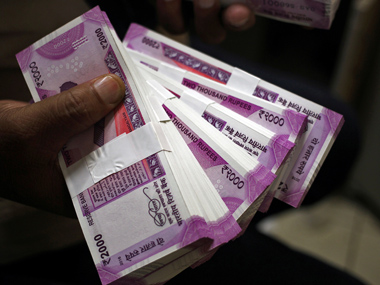The Union Budget to be presented on 1 February has been taken to be the next big thing that can happen to reshape the prospects of the economy. Starting with monetary policy and moving along a series of sector-specific policies, the needle has come back to fiscal policy to offer solutions. So far the focus has been on the supply side when the problem appears to be on the demand side. In a limited manner, the government did lower the corporate tax rate to provide an incentive to industry to invest on the demand side, but admittedly this will take time to work out. A more direct attack is required and within the realm of the Budget, capex can be the pivot. [caption id=“attachment_6013191” align=“alignleft” width=“380”]
 Representational image. Reuters[/caption] When the suggestion is made that the government should spend more, it is assumed that the focus is on increasing capex which will be directed towards roads, railways, power, ports, etc., which will, in turn, generate jobs directly. Cutting corporate tax rate or making funds cheaper is part of the plan. However, for the tax cut to work, it has to be invested and the government has no control over what companies do. Similarly, the RBI can cut rates aggressively but the response of companies cannot be forced as they are based on demand conditions. Capex injects funds directly into the spending stream and is hence superior to even direct cash transfers where the action of the beneficiary can never be guessed accurately. So how important or large is this capex? The table below provides some time perspective of capex of the central government and related ratios. While capital expenditure is aggregate outlay on the capital side, the effective capex excludes loans given by the central government and outlays on defence. The table provides valuable insights on the importance of capex. First, it has been increasing at a compound rate of 10.3 percent per annum in the last six years which is the same as that of overall size of the Budget. Therefore, there has been a tendency to keep the rate of growth in capex on par. This is important because it can be an indicator of what kind of growth can be expected in the ordinary course of budgeting for FY21. Under normal conditions, if the overall size of the Budget increases to say Rs 30.65 lakh crore, effective capex would be 2.28 lakh crore. Second, the effective capital expenditure which is what is really spent on non-defence non-loans purpose and includes the physical infrastructure that is created is around 60 percent of total capital expenditure of the government and an improvement from the range of 43-47 percent in 2013-14 and 2014-15. The difference is the amount deployed for defence and loans and advances given to other entities which are mainly state governments. The defence needs to be excluded because normally such expenditure would be import-oriented and would not add to investment within the country. Loans by definition would be capex accounted for by states which however may also be used for repayment as money is fungible. Third, as a proportion of total expenditure effective capex has been in the region of 7.5-8 percent in the last five years which is definitely higher than the 5-6 percent maintained earlier. Fourth, the same is just about 1 percent of the GDP and quite clearly has been elevated in the last five years where it has been higher than in the earlier years. Therefore, the BJP-led government has been quite aggressive on this front to ensure that capex is progressively higher. Against this background, the pertinent ideas which come to mind are two-fold. The first is what can be the level of expenditure this time assuming that the government goes in for a stimulus. The fiscal deficit ratio will be important here as an increase in capex beyond 10 percent—which broadly could be the number taken for the size of the Budget—too, would mean a higher deficit will be generated. The ratio was targeted at 3.3 percent for FY20 which can be breached and move towards 3.8-4 percent mark as being the revised ratio. This will be a call that the government has to take. Intuitively, an additional 1 percent fiscal deficit ratio would be around Rs 2-2.1 lakh crore that can be incurred. The critical thing of course is whether or not the other numbers on revenue and mandatory expenditure work out as projected or not. Assuming that the other numbers will be on course, the additional Rs 2 lakh crore can be used for effective capex and the fiscal deficit ratio would increase from 3.3 percent (Budget 2019-20) to 4.3 percent (Budget 20120-21). The question is whether or not the government is prepared for this higher level given that the Fiscal Responsibility and Budget Management talks of movement towards 3 percent with slippage of 0.5 percent being tolerated in difficult times. The second set of issues revolves around the question of whether this will really help to revive the economy.
The fundamental question is whether a sum of Rs 2 lakh crore of capex as of today can galvanise an economy of Rs 204 lakh crore (for 2019-20)? As a corollary, if this increases to Rs 4 lakh crore, with a higher fiscal deficit, will the course of GDP growth be very different?
Here the response should be guarded. An increase in capex will definitely increase spending more effectively than any tax cut which depends on the beneficiaries’ response as such an action is direct. As a proportion of expected incremental GDP of around Rs 20 lakh crore in FY21, the big push has to still come from the private sector to move the ‘elephant’. This additional Rs 2 lakh crore can at best create the starting points which have to be joined by the private players. (The writer is Chief Economist, CARE Ratings) Follow full coverage of Union Budget 2020-21 here


)
)
)
)
)
)
)
)
)



